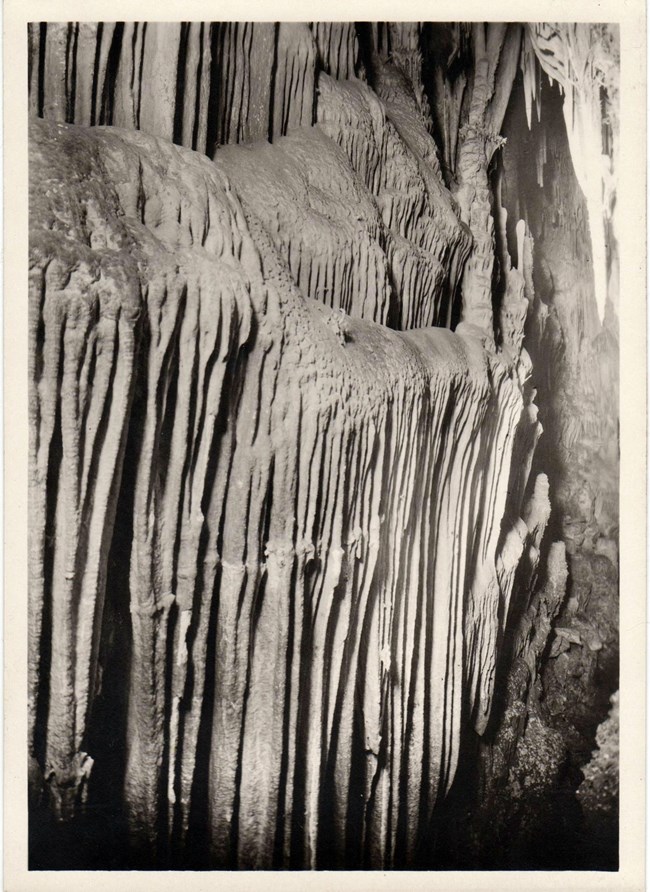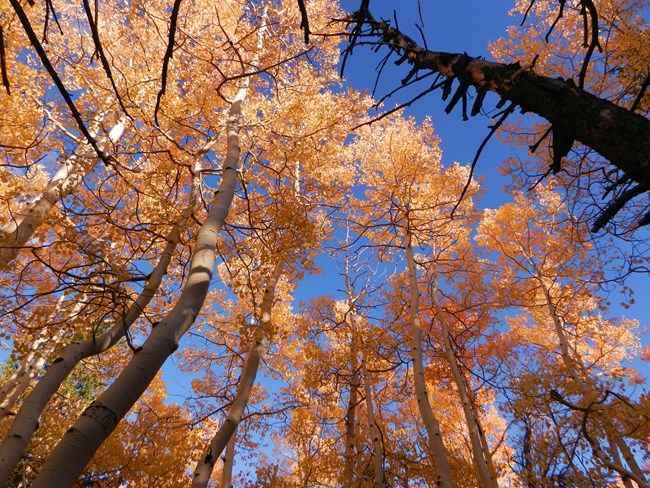Last updated: November 22, 2025
Article
Top 10 Things To Know Before Visiting Great Basin

1. Plan for little to no cell service, and download the NPS app.
Great Basin has little to no cell phone coverage, especially in more remote areas of the park. There is also no public WiFi available anywhere inside the park. Download the National Park Service App on the App store or Google Play, find Great Basin National Park, and select "save this park for offline use" on to ensure you have all the information you can during your visit without coverage. Also, download offline maps for the local area using your phone's navigation app or bring/purchase a physical map to assist with wayfinding. Low coverage will also make last minute campground or cave tour reservations difficult to access!
Historic Image
2. Reserve a cave tour ahead of time!
Many visitors come to Great Basin to explore the highly decorated Lehman Cave. Reserve your tour ahead of time through Recreation.gov when they become available thirty (30) days in advance. First-come, first-serve tours do happen, but are rare and subject to staff availability. Do not expect a visit into the cave without a reservation! Lehman Cave may also be explored by those with accessibility concerns, so let a park ranger know if you need any special considerations.3. Thunderbolt and lightning, very, very frightening me!
The Great Basin sometimes has incredibly active monsoon seasons. Check the weather forecast before you arrive, thunderstorms are common during the summer months and will make hiking in the park extremely hazardous. Hiking in high elevation areas, large meadows, and sparse forests is extremely dangerous during thunderstorms. Ensure you're off hiking trails before lightning becomes a danger. Talk with a park ranger for more information about the day's forecasts, as they change often!

Tom Auchter
4. It's full of stars!
Great Basin National Park is an internationally recognized Dary Sky Park meaning we have some of the darkest, purest night skies in the world. In the summertime, ranger programs, the astronomy festival, and more take place to guide you on your gaze toward the stars, but stargazing on your own can happen anywhere and anytime of night in our slice of Nevada. Check the calendar for astronomy programs & the astronomy festival, and use online tools to find meteor showers, planet viewing, or the moon's phase. The weather, the moon, and the clouds may not always cooperate! Plan ahead for the best chance to see the stars.5. Pack more than you think you need.
Wheeler Peak can take upwards of eight (8) hours for those not used to hiking above 10,000 feet. Many trails can be strenuous, and it is always better to pack for a longer journey than you expect. For example, packing headlamps in your bag can make the difference between hiking out safely or getting lost during early sunsets when the light disappears behind the mountains. Altitude sickness also affects many visitors who push themselves too hard. Make sure you set a moderate pace, drink plenty of water and electrolytes, and take breaks when neccessary.

NPS/Robb Reinhardt
6. Stay with us a while, won't you?
Many are surprised by the amount of activities, hiking trails, and fun they have here on our sky island. Plan to spend at least three (3) days to experience the wide gamut of recreation there is to be found in and around Great Basin National Park. The summer brings droves of wildflowers, animals looking to browse, large numbers of cave tours and astronomy programs, chances to hike, drive and explore all there is here. The more time, the better.7. Book a campsite, or find accommodations outside the park.
Campsites fill quickly in summer. First-scome first-serve campgrounds like Baker Creek and the sites along the road to the Snake Creek Trailhead will often be totally full during weekends, especially during holidays. Booking a campground well in advance via recreation.gov means you'll not have to search frantically for a place to stay. Hotels and motels are an option for staying in Baker, NV or Ely, NV, the closest communities to the park.
8. Make backup plans for your backup plans.
Less prepared visitors to our remote area can lead to frustration if campgrounds are full, cave tours are fully booked, weather prevents hiking, or amenities are shut off for the season. Create backup plans for these and more scenarios by finding what's available in Baker (goods and services link), learning about other federal lands nearby like those managed by the Bureau of Land Management (BLM link) or the US Forest Service (humboldt link), and researching alternative hiking trails. Conditions are very unpredictable in this neck of the woods, so come with a flexible state of mind!
NPS
